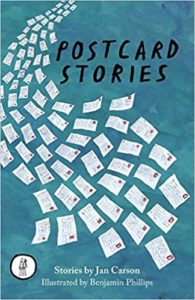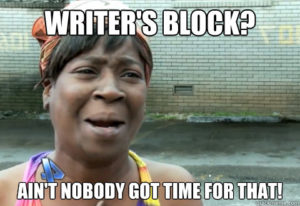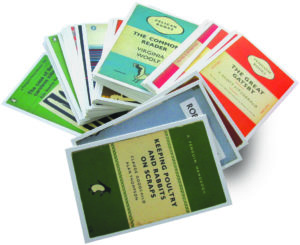I am loathe to tell a young writer what to write, but I do try to introduce them to different forms of writing because one size does not fit all and it may be that any creative paralysis they’re experiencing could simply be because they are poets, not playwrights, or novelists, not short story writers.
The English curriculum covers novels, poems and plays. Maybe a short story or two. YA publishing doesn’t cover much more than this either. There are very few short story collections for teens, never mind anything more experimental. Which means there are so many forms and genres out there that they haven’t even heard of, and one of them just might be their writing comfort zone.
For example, there’s Memoir, Prose-Poetry, The Personal Essay, Flash Fiction, Novellas, Micro Fiction, Radio Drama, Spoken Word Poetry, Creative Non-Fiction, TV Scripts, Graphic Novels, Video Game Writing, Blogging, Fan Fiction, Nature Writing…
There’s even ‘Twitterature’.

And probably more, not to mention all the variation and genres within these. Some of the more uncommon things produced at our writing club have included:
- Essays for competitions
- A non-fiction book about the history of a NI political party (he’s planning a series of these books covering each of the NI parties. He’s 14)
- Background stories and plot for a murder mystery game (this was the most complicated, intricate and seriously impressive piece of work I’ve ever seen)
- D&D characters
- Social media collaborations on a multi-protagonist novel
- Illustrations for fantasy and manga characters.
Just because a young writer hates nature poetry doesn’t mean they’re not a writer. It just may be that their genre has never come up on an English exam. (It may not even exist yet.) So I think it pays to let them experiment and explore.
In future posts I’ll cover some of these forms/genres, starting here with:
Flash Fiction and The Postcard Box
The Postcard Box was inspired by a writer friend of mine, Jan Carson. During a period of writer’s block, she set herself the challenge of writing a tiny story on the back of a postcard every day for a year and mailing it to someone. The idea of committing to something like this is mind-blowing to me but she actually did it. I know because she then published a collection of them with Emma Press.

I have never seen a writer stick two fingers up to writer’s block quite so effectively!

Anyway, my young writers were very inspired by the book and the story of its creation. So I got a box of postcards for us. And now, if anyone writes something short enough to fit, they can take a postcard and write it on the back and put it in the box.

This has the wonderful advantage that if someone only manages to write a paragraph or a haiku, they still feel they’ve achieved something. It’s also a nice way to preserve their writing, much of which gets ‘filed’ at the bottom of their school bags otherwise.
What Jan was writing was essentially Flash Fiction. None of the kids had heard of Flash Fiction but it’s becoming pretty common. There is even a National Flash Fiction Day (6th June). Definitions vary but Flash is usually considered anything under 1000 words, and Flash competitions will often specify fewer than 500 words or 150 words. Anything less than 100 is sometimes called Micro Fiction.
So it’s really a very short story. But it has to be a proper story. I.e. it has to have a beginning, middle and end. Writing Flash can teach you a lot about story structure, editing and concision because you have to be clever with language to do so much in such a short space. Some writers respond well to having that sort of structure to work within.
The most famous example is Hemmingway’s six-word story:

What this demonstrates is:
- A whole narrative can be encapsulated in a few words. There is a whole story here: a beginning (baby shoes), middle (never worn) and end (for sale).
- These don’t have to be presented chronologically.
- A good story poses more questions than it answers. Those questions will stay with the reader.
- Everyone will imagine the details differently, and that’s fine. In fact, it’s better, because those details will happen in the mind of the reader rather than on a page they can walk away from.
- Six words is extreme but it introduces the idea that a story does not have to start with a character’s birth, include reams of backstory, explain every thought in their head or what they had for breakfast. It’s a masterclass in relevance.
But you don’t have to know anything about Flash Fiction yourself. This short article in The Guardian is a good introduction to writing Flash so I printed it out to give to my young writers.
And you can find loads of examples of Flash online which you could print to inspire them. These are just a few:
- This one is great because it’s a Flash competition for 15-19 year olds (closing 7th Feb) and the site includes examples of stories by past winners you can download.
- Winners and runners up of the Bath Flash Fiction Award.
- The New Yorker has a Flash Fiction series.
- Links to 21 flash fiction pieces organised by length
- This family-friendly SciFi and Fantasy community site has regular Flash Fiction competitions and writing advice
As always, I’d say just make these available for anyone who’s curious, discuss it with them if they seem interested, but let the rest get on with their own stuff. Flash may not be for them and that’s fine, but once they know what it is, some kids may find they like it, and if they’ve written a short poem or just a tiny, beautiful description, you can encourage them to put it on a postcard for the box and make your own collection!
Stéphanie Brown says:
In the same line of thought, we are trying Anecdotes on the white board in our Library. They can write, in a few lines, what is relevant to them at the time (some, not to say most of which is not publishable but they usually settle once they realise it is not censored;@)
I also took part last year in the BBC Radio 2 500 words competition as a judge. I am hoping to get some of the pupils to take part this year.
https://www.bbc.co.uk/programmes/p00rfvk1
Kelly McCaughrain says:
This is a great idea! My group doesn’t own the space we work in so we can’t use the walls or whiteboards but if you have room of your own, it’s lovely to be able to decorate it with your words. Then it really feels like your own.